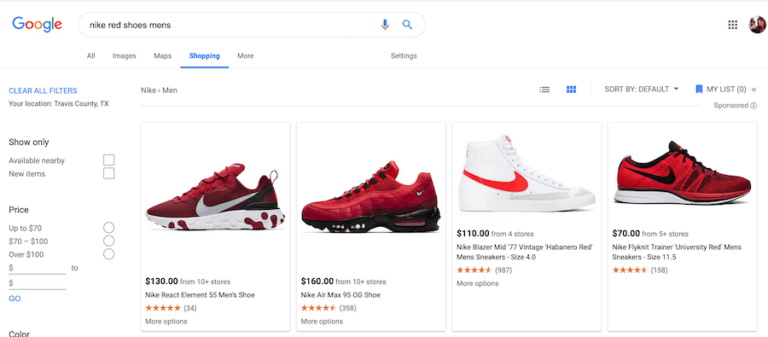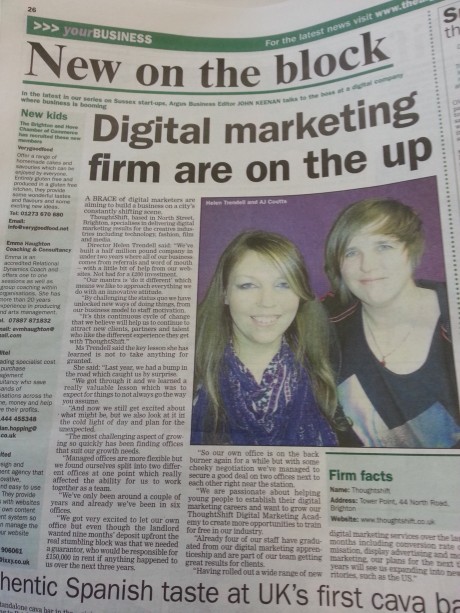There is no doubt in the statement that fashion is going digital. With almost every high-flying magazine offering additional material online, whether it be on your mobile, iPad or laptop, and nearly every thinkable shop or designer having some form of internet presence, it is hard to ignore. Yet digital fashion is still in its baby stages to some extent. Cara Delevingne famously took the fashion world’s first ever runway selfie earlier this year, while digital pessimist Tom Ford only just launched his first eCommerce site in March. The fact that this is still big news suggests fashion still has a way to go, but that is not to say it is not on its way.
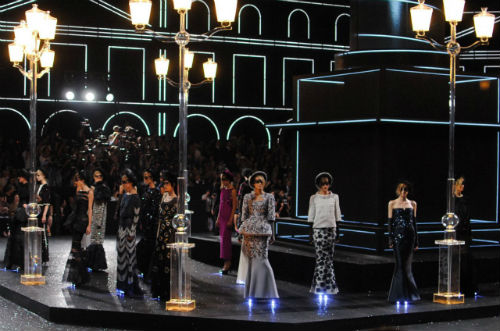
Your Site Is An Extension Of Your Brand
Just as you should appeal to your audience’s interests, you should also go to where you know they are, just as you would when you are shopping. If you are looking for a sophisticated evening dress, you would probably not start your search at Office, for it is quite clear from their large display of shoes that they would not have what you are looking for. This is just the same for your audience.
With over two billion people actively using the internet, you are seriously inhibiting the chances of reaching them if you and your brand are not online. This is something that Tom Ford previously disputed, having formerly claimed that the immediacy of the internet can leave customers bored with collections before they have even hit the shops. His disdain has kept him offline until this year where he has launched one of the sleekest and classiest websites to showcase his accessory designs (which you can drool over here).
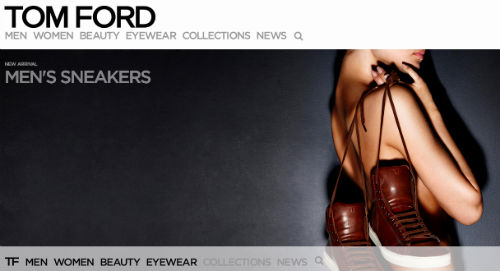
Ford claimed of his decision to go digital: “I have waited patiently to introduce e-commerce until I felt the foundation of the brand was well established online” . This may alarm you considering this hugely successful director and designer has been a well-established name for many years. Yet his name was associated with intrigue, hype and anticipation, and because of this attitude he could afford to be so elusive. Such high end fashion brands are in a competition above all others and, therefore, have set themselves a bar higher than ordinarily expected in order to impress their elitist audiences (I mean did you see Cara Delevingne quite literally fly down the runway for Burberry?) For other brands with audiences far easier to reach, however, there are still lessons that can be learnt here.
Firstly, Ford has used his website as an exceptional extension of himself. The website exudes the attitude, class and superiority of his own being, just as his films and designs do. In the twenty-first century a website offers one the opportunity to project one’s self into a digital form, and this applies to all eCommerce sites. If your brand wishes to attract a young generation it is important to find out what young people are interested in and tailor your site to this. On the other hand, if your products are suited to a more mature audience, this needs to be reflected in the design and tone of your online voice (they may not appreciate having One Direction’s faces all over the page, for instance).
Choose Super (Model) Popular Trends

While Cara Delevingne is famous partly for her slouchy urban style and heavily defined eyebrows, she has also changed the face of supermodels on our smaller screens. With 5.3 million followers on Instagram and 1.6 million on Twitter, Cara is one of the most followed celebrities in the digital sphere, which makes her a top choice for brands looking to reach a vast, current audience. Her contracts with Burberry and Yves Saint Laurent were made instantly more effective merely by featuring her face because it is already popular with millions of viewers. This then made the brands she was endorsing popular with her huge number of fans, regardless of what it is, therefore making her one of the most sought after models in the industry to date.
Whereas it may be difficult for smaller brands to get the likes of Cara Delevingne to approve and show off (and fly with) their products, it is possible to learn from the simple marketing techniques employed. Cara’s modelling success is not purely down to her striking appearance, it is because of her enormous popularity worldwide.
By choosing an idea, quote, trend or even colour that is already popular is a great way to attract people’s attention, because it means that they are already interested in it. This is not to say you should always follow every trend, especially if that isn’t what your brand is about, but it is important to tap into and act upon your audience’s interests.
Sociable Fashion
Following on from finding your audience, it is essential, and also very easy, to go to them directly. The power of social media has not stopped growing since its launch almost ten years ago and is consequently a huge part of online marketing. It is a direct form of interaction between brands and customers which is proven to greatly improve a customer’s user experience.
By previously refusing the presence of smartphones in his catwalk shows through fear of people becoming bored before the clothes hit the rails, Tom Ford certainly did create an air of elusiveness and exclusivity that drew attention towards him. Yet in this day and age by doing that you are missing out on one of the most influential marketing resources available to date. With social media platforms such as Pinterest, YouTube and Instagram especially, where the focus is entirely on the aesthetics of an image, fashion thrives. Plus, with such a demanding market in eCommerce where people have become accustomed to 24 hour support, live chat, opening times and so on, eCommerce sites are having to constantly find and improve innovative ways to keep their customers hooked.
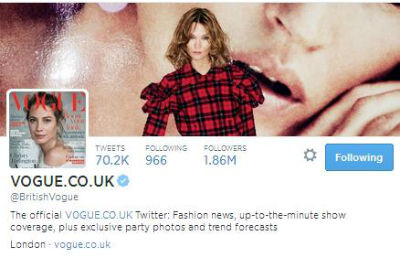
Although having Tom Ford thrown at you as an aspiring example for your fashion eCommerce site may be slightly intimidating, he is simply an interesting example of how going digital in fashion is a very personal thing. The success of any brand relies upon how its image is received by its target audience, and with the majority of your audience being online it makes good business sense to be on there too.
The successful digitalisation of your brand must remain true to what you do, cater to your target audience, and represent your style and essence in every way. For the best results, extend this mantra to social media to help you go out and actually find the thousands of people that could be interested in your company, rather than waiting for them to find you.
If you feel that you need some help or guidance with getting your fashion or eCommerce brand online take a look at our social media marketing and digital marketing services today, or contact us now to see how else we can help!
Follow my contributions to the blog to find out more about our fashion and eCommerce services, or sign up to the ThoughtShift Guest List, our monthly email, to keep up-to-date on all our blog posts, guides and events.

